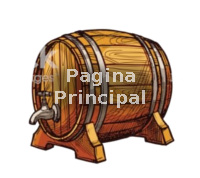 Presentamos el clásico ruso y cómo hacerlo.
Presentamos el clásico ruso y cómo hacerlo.
Muy ligeramente alcohólico, naturalmente gaseoso y con un sabor fuerte y ácido, es un tradicional
Quencher de verano disfrutado por adultos y niños.
La fermentación ha sido durante mucho tiempo una parte natural de la cocina rusa y eslava, y los sabores amargos y ligeramente amargos que imparte son apreciados. De hecho, en Ucrania "kvass", que proviene de la palabra "endulzar la fermentación", se refiere tradicionalmente a un líquido de remolacha fermentada, que se utiliza para hacer la famosa sopa borsch, entre otras cosas. Pero el significado más comúnmente entendido de esta palabra proviene de la tradición rusa de fermentar el pan de centeno con miel y especias, que produce algo en algún lugar entre una cerveza y un refresco, pero que tampoco lo es.
Cómo hacer el kvass perfecto
Llene un frasco grande con tres litros de agua caliente y 200 gramos de cortezas de pan de centeno secas; cuanto más oscuro, mejor.
Agregue miel, pasas y azúcar, más un puñado de semillas de alcaravea tostadas y semillas de cilantro tostadas y cubra con un paño de muselina suelto.
Siéntete libre de experimentar con diferentes cantidades. Deje en un lugar cálido, la cocina es ideal, hasta que vea que las burbujas comienzan a subir.
Esto puede tomar desde seis horas hasta un par de días, dependiendo de la temperatura ambiente.
Coloque el frasco en la nevera para retardar la fermentación y disfrute dentro de unos días.
Imagina una cerveza ligeramente gaseosa, tal vez, pero sin que sea amarga y aguardentoso
Ligero y amargo, pero donde definitivamente puedes reconocer los sabores de centeno allí. Es como una bebida de pan de centeno gaseosa. Eso es lo que es, y eso es lo que sabe.
Kvass es un producto vivo, que extrae su sabor único y refrescante, en parte, de la levadura natural que se fermenta en su interior, por lo que no es adecuado para el envasado, el transporte y la comercialización.
Kvass solía ser promocionado como una alternativa patriótica a Coca-Cola durante la Guerra Fría, Coca-Cola lanzó su propia versión de la bebida, Krushka & Bochka, en Rusia en 2008.
Se ha hecho un intento más auténtico por parte de algunas cervecerías artesanales de EE. UU., Incluida la Cervecería Beaver de Pensilvania.
Beaver produce kvas durante todo el año, y el propietario y cervecero principal Dan Woodske afirma que es el más cercano entre las encarnaciones comerciales al clásico ruso original.
"Muchas cervecerías en los Estados Unidos fabricarán una versión de kvass y es más como una cerveza. No es como autentico Kvass ruso.
Esto se debe a que el nivel de alcohol naturalmente bajo de la bebida, combinado con la falta de conservantes y lúpulos, significa que tiene una vida útil limitada a un máximo de dos semanas, y eso no es una perspectiva atractiva para quienes esperan lanzar un producto comercial importante.
Sin querer cambiar las características de kvass que lo hacen único, Beaver ha tenido que adaptar su producción y distribución. Su elaboración se hace en "lotes súper pequeños" para evitar el desperdicio y disponible solo en la cervecería.
Para el bebedor de cerveza estadounidense, constantemente en busca de algo nuevo e interesante para desafiar el paladar, Kvass, representa una experiencia completamente nueva.
Introducing the Russian classic and how to make it
WORDS: Liz Longden ILLUSTRATION: Ross Daniel Russell

If you’re looking for something new and a little bit different to sup during the coming summer, how about some homemade Russian ‘fizzy rye bread drink’?
Kvass is relatively unknown in Western Europe and the US, having only recently surfaced on the hipster radar thanks to a growing trend for home-fermentation. In Russia and the countries of the former Soviet Union, however, it has been part of everyday life for centuries. Very slightly alcoholic, naturally fizzy and with a tangy, bready flavour, it is a traditional summer quencher enjoyed by both adults and children. While Western kids might chase the chimes of the ice cream van through the streets on a warm summer’s day, their ex-Soviet counterparts would more likely be found queuing alongside giant tanks of kvass, which would be wheeled around the streets by mobile vendors.
And, indeed, the street vendors still do the rounds today.
The chef and food writer Olia Hercules hails from Ukraine and has fond memories of this most refreshing of drinks. “My experience of it is from the age of six to around 12. I had an English teacher, who was Russian, in a tiny town in Ukraine; I had English lessons with her, and every time I’d come I’d get some kvass and it’d be like a little treat.” She adds: “I don’t know how amazing or real street vendor kvass is – I’ve never had it.
But my teacher’s was the real deal.
It was just gorgeous.”
Fermentation has long been a natural part of Russian and Slavic cuisine and the slightly sour, tangy flavours it imparts are cherished. In fact, Hercules explains, in Ukraine ‘kvass’ – which comes from the word for ‘making sour through fermentation’ – traditionally refers to a fermented beetroot liquid, which is used to make the famous borsch soup, amongst other things. But the most commonly understood meaning of the word comes from the Russian tradition of fermenting stale rye bread with honey and spices, which produces something somewhere between a beer and a soft drink, but which is not quite either.
How to make the perfect kvass Fill a large jar with three litres of hot water and 200 grams of dry rye bread crusts – the darker the better. Add honey, raisins and sugar, plus a handful of toasted caraway seeds and toasted coriander seeds and cover with a loose muslin cloth. Feel free to experiment with different quantities. Leave in a warm place – the kitchen is ideal – until you see bubbles beginning to rise.
This can take anything from six hours to a couple of days, depending on the ambient temperature. Put the jar in the fridge to slow fermentation and enjoy within a few days
“Imagine a lightly fizzy beer, maybe, but without it being bitter and beery,”
Hercules explains. “Like really light and sour, but where you can definitely recognise rye flavours in there. It’s like ...” – she pauses to think, and then laughs – “... a fizzy rye bread drink.
That’s what it is, and that’s what it tastes like.”
Kvass of the kind that used to be quietly fermenting on Hercules’ teacher’s window sill is a living product, drawing its uniquely refreshing flavour in part from the naturally fermenting yeast within, and is therefore ill suited to canning, transportation and commercialisation.
That’s not to say, however, that some haven’t tried. Somewhat ironically, given that kvass apparently used to be touted as a patriotic alternative to Coca-Cola during the Cold War, Coca-Cola itself launched its own version of the drink, Krushka & Bochka, in Russia in 2008.
An arguably more authentic attempt has been made by some US craft breweries, including Pennsylvania’s Beaver Brewery.
Beaver produces kvass all year round, and owner and head brewer Dan Woodske claims his is closest among commercial incarnations to the original Russian classic.

“A lot of breweries in the United States will make a version of kvass and it’s more like beer. It’s not like authentic Russian kvass,” he says. This is because the drink’s naturally low alcohol level, combined with a lack of preservatives and hops, means it has a shelf-life limited to a maximum of two weeks –and that is not an enticing prospect for anyone hoping to launch a major commercial product line. Unwilling to change the characteristics of kvass that make it unique, Beaver has instead had to adapt its production and distribution. Its brew is made in “super small batches” to avoid wastage and is only available in-house, at the brewery.
“We want it to be good, we want it to be fresh, and true to the style,”
Woodske says. “So we don’t ship it anywhere. If you want it, you have to come to the brewery to get it.”
The reason that Woodske goes to such trouble is, he says, for a love of the unusual. To the American beer drinker, constantly on the lookout for something new and interesting to challenge the palate, kvass, he says, represents a whole new experience.
“It’s just really weird, and fun,” he candidly admits, adding that the brewery regularly shakes things up with experimental variations. Indeed, so much fun has Woodske had with kvass, drawing inspiration, he says, from recipes mined from old Russian housewife magazines, that he has even written a book about it.
Nevertheless, for Olia Hercules, kvass ultimately remains a drink made to be fermented in the home – not only because she argues that it tastes better that way, but because the process of ‘brewing’ is simplicity itself, perfectly suited to the everyday, humble kitchen. Rather than any complex technique or expensive equipment, the key to success, she says, is in the quality of the ingredients.
Authentic rye bread, made from a sourdough culture and organically produced, is essential. It is important not just in causing fermentation but because some of kvass’s distinctive flavour comes from the wild yeast naturally present on and within the bread, and chemicals and overprocessing can hinder or kill these off. Natural honey – that is to say, organic and unprocessed honey – is recommended for the same reason. To further boost the wild yeast and impart a ‘meadowy’ flavour to the drink, traditional kvass brewers in the Ukraine will often use dried pellets, made from a mixture of organic flour and wild hop flowers. Hercules says she usually brings a stash of the pellets back with her from visits to Ukraine, but that organic rye grains – easily found in health food shops or online – can work as a good substitute. Spices such as caraway and coriander add an extra aromatic twist and the final vital ingredient is good water – in other words, not chlorinated tap water, but mineral or natural spring water.
The last thing that is needed is a large jar and a piece of loose muslin to keep out dust and flies. “People are so scared of fermentation – they think it’s such a complicated process.
It’s not. It’s really easy. You can ferment anything. As long as you use really good produce, you can’t go wrong.”
Olia Hercules’ new book, Dedakatsi: The Cookbook – A Journey Through
Kvass in the kitchen
The distinct, earthy flavour of kvass means it has always been used as the basis of many traditional dishes, but its unusual sour taste has led to it being used by modern bartenders as a tangy addition to cocktails and picklebacks.
In 2014, Bonnie Morales and her husband opened the doors to their Portland restaurant, Kachka, cooking up dishes infused with nostalgia and steeped in history, inspired by her upbringing in a Belarusian family and putting kvass to good use.
Meals at Kachka begin with a table of zakuski, Russia’s answer to tapas – drinking food paired with vodka.
Morales says: “We use our homemade kvass in a recipe for Buzhenina, poaching pork loin in kvass to add flavour as well as to reduce it down to a syrup to accompany the dish.
Some also put kvass in their borsch.
“We’ve made cocktails with it too.
‘Pass the Kvassier’ has cognac, kvass and orange, as well as a version of a Brandy Alexander with kvass, brandy and ice cream.
“It did fall out of fashion from the fall of the Soviet Union until now. But we’re seeing a nostalgic interest in the era’s food and drink returning.”
the Wild East is out now

























